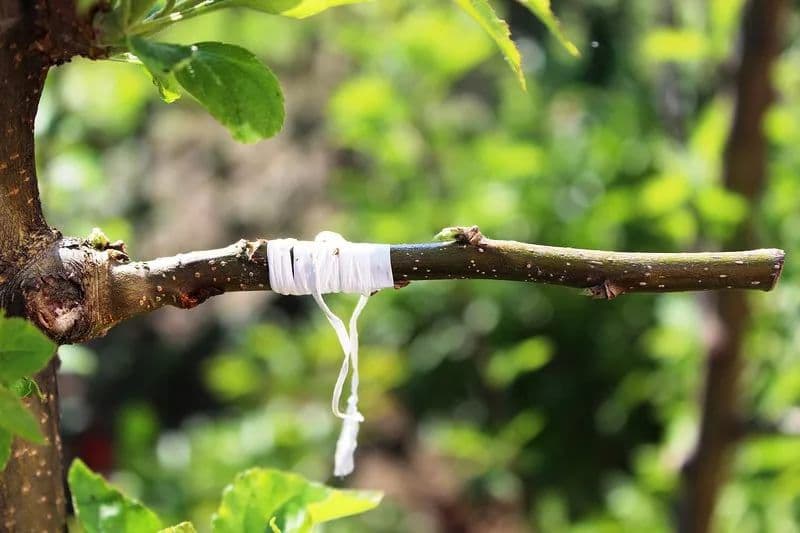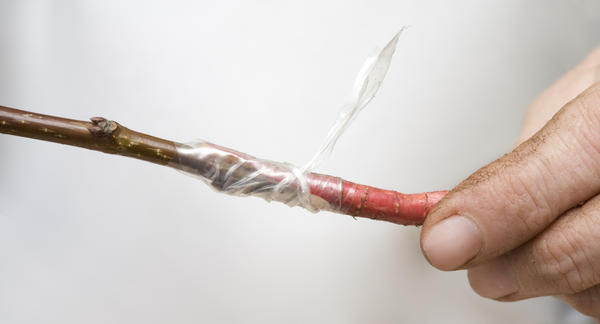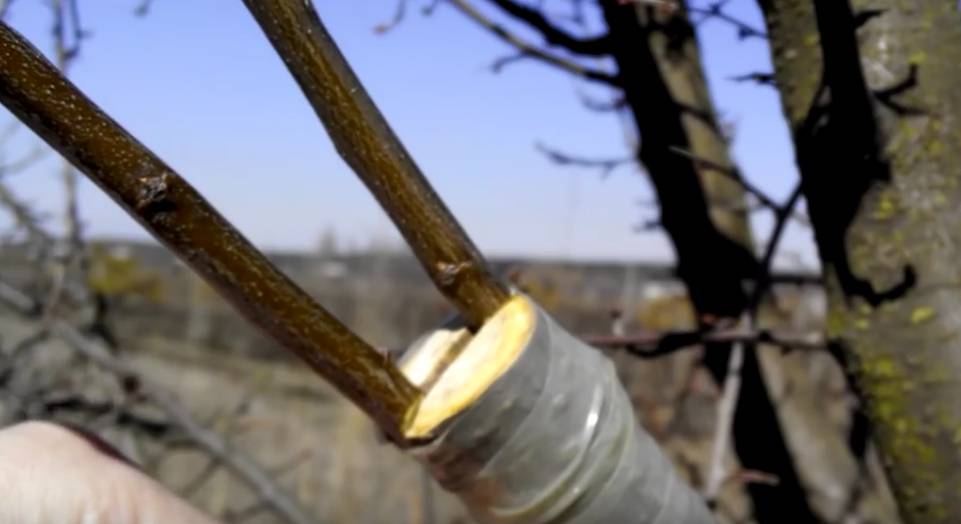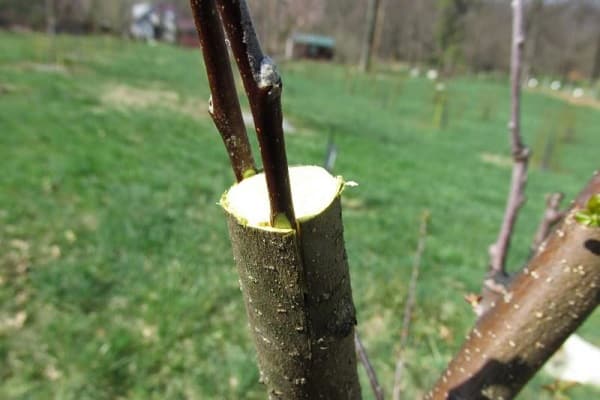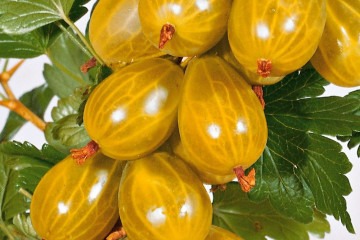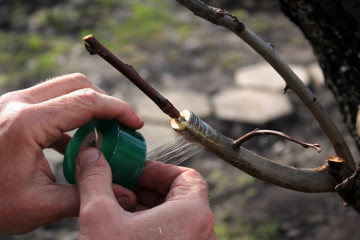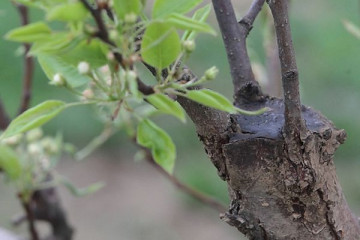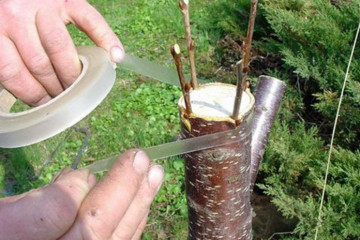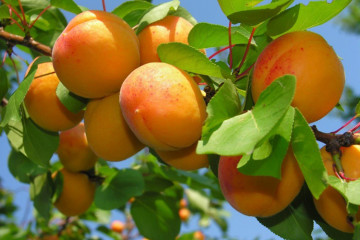Peach grafting - in the summer season and for apricots
Content:
One of the important agricultural techniques is grafting and re-grafting of horticultural crops. For the result to be crowned with success, it is worth completing all stages of the procedure correctly.
Why do you need to plant peaches
Peach grafting is an integral part of getting a quality crop. This procedure allows you to grow southern trees even in cold regions. Sometimes it can be called the only method that allows you to preserve rare varieties of horticultural crops.
By grafting a peach, it turns out to achieve:
- domestication of wild animals and cultivation of varietal peaches on them;
- replacing one variety with another that suits you more;
- growing several types of fruits on one tree at once;
- accelerated harvesting process;
- saving the tree in case of damage to the bark by rodents;
- reproduction of favorite or just rare varieties.
When to plant a peach in spring and summer: optimal timing
It is worth familiarizing yourself with how to plant a peach in spring. The procedure is recommended to be performed before the process of sap flow has begun. During this period, the kidneys are still dormant. The timing depends on the chosen method of the procedure. In the southern regions of Russia, vaccinations are done more often in March, in the middle lane - in May. Consideration should be given to the weather conditions of the current seasons and the state of the crops. The temperature regime of the air should have a positive indicator at any time of the day. After all, negative indicators can lead to the rejection of the scion.
What can you plant a peach on
Thanks to this procedure, you can not only increase the yield, but also diversify it with different types of fruits in one garden, even with small parameters. To do this, you need to know what the peach is grafted onto.
Is it possible to graft a peach on an apricot
Grafting a peach on an apricot is quite appropriate, because these crops have excellent compatibility with each other. Apricots are universal peach rootstocks. After all, most of their varieties are frost-resistant and grow on various types of soils. Peach grafting should be done on Apricot Veteran, Juicy, Greensbor, Redhaven.
Is it possible to plant a peach on a plum
There are also cultures to which the peach is grafted. If a gardener has decided to plant a peach on a plum in his plant nursery, it is worth choosing varieties that are unpretentious in care, endurance and frost resistance.
Benefits of grafting peach on peach
It is optimal to make a peach stock for peach, but a more hardy variety or wild.Before you get acquainted with how to graft a peach on a peach, it is worth considering what are the advantages of the procedure:
- the grafted variety will most likely bear fruit better;
- the stock is accepted faster;
- a peach tree is more suitable for fresh cuttings.
Peach compatibility with other fruit trees
As rootstocks for peach, seedlings of almonds, peaches, cherry plums, and cherries are often used. Bitter almond seedlings are vigorous peach rootstocks. They are quite well combined with all its varieties. The tree on this rootstock is early-growing, the first fruits appear 3-4 years after planting.
What should be the stock
For the procedure to be successfully completed, the stock should be selected in accordance with the following indicators:
- the cutting must have sufficient frost resistance for a specific region, resistance to drought or waterlogging of the soil, and other negative factors characteristic of the local climate;
- compatibility with scions is encouraged. Stone fruits should be grafted onto seedlings of the same kind;
- it is worth considering the botanical relationship, because the closer it is, the higher the success rate.
Peach scion selection rules
A high-quality graft should have the following parameters:
- length approximately 35 cm;
- thickness is about 7 mm;
- not long internodes;
- well-defined growth buds;
- the number of developed kidneys is not less than 4-5 pcs.;
- the scion should be taken from a young seedling that is already bearing fruit, 3-10 years old.
When to procure
It is worth familiarizing yourself with the rules for preparing cuttings:
- they should be pruned from a stable, fruiting tree that has been tested for grades and yields;
- for scions, you need to choose well-ripened shoots no more than 1 year old;
- it is better to take shoots from the outer part of the crown, where the sun's rays enter;
- cuttings should be cut from the south on the culture, they usually have short internodes and well-developed eyes in the axils of the foliage;
- the highest quality cuttings are cuttings from the shoots of middle tiers of crops, since the upper ones are too thick and powerful for the scion, and the lower ones are distinguished by such quality as a small increase;
- you need to choose shoots from young horticultural crops, on which there are fewer flower buds, cuttings should be made longer - about 65-70 cm.
Scion storage
When storing, you should use the basic rules:
- prevent freezing;
- exclude the possibility of drying out;
- keep the scions in complete rest;
- prevent rodents from accessing them;
- prevent damage to cuttings;
- use the inscriptions so as not to confuse the cuttings in places.
Rules and recommendations for the peach inoculation procedure
The main tool for a successful vaccination is a knife. With the appropriate shape and the sharp blade of the knife, you can easily make the desired cut. You should not use a kitchen knife, because its blade is not sharp and strong enough. Due to the slightest bending of the instrument during the cutting process, the quality of the procedure can be spoiled.
You should use garden shears to prepare your rootstocks and cuttings. A special knot tool is used to trim thick branches. For sharpening tools, you should use a sharpening wheel with a fine-grained edge.
To secure the grafts, you need special dressings with an elastic structure of various sizes. A raffia washcloth and pieces of plastic tape will also work. The cut must be treated with wood putty.
Peach grafting methods
There are several ways to vaccinate. Which one, the gardener himself decides, the main thing is to do it right.
Copulation
For thin stocks, copulation is the most suitable grafting method. The rootstock and scion in diameter should coincide as much as possible. The main point is the connection of both parts.
Simple copulation
The essence of a simple copulation is that a cut of the same size should be made on the rootstock and scion, which should then be pressed tightly against each other. Thanks to this close contact, they grow together over time.
Improved copulation
This method differs from the simple type of copulation in that splits-tongues are made on oblique cuts of the scion and stock, due to which a kind of lock is formed, which allows the scion to hold tightly in the stock.
Into the cleft
If this vaccination is carried out on a 1-2-year-old game or branches with a small diameter, the procedure is not difficult. Grafting into stumps and large skeletal branches is a more complex process that requires certain skills.
For the bark
The right time for grafting a tree for the bark is spring, when the period of the beginning of active sap flow occurs. In the southern regions, horticultural crops can be grafted from the beginning of March.
Side cut
A prepared cutting according to this method is grafted on the side of the stock, inserting it into a small cut in the wood. The method allows you to achieve a strong fusion of the scion and rootstock.
Budding (inoculation with an eye): butt and T-shaped
This method is the most economical, because it is permissible to take several buds from one cutting. The graft is inserted into the T-cut. The procedure should be carried out early in the morning, preferably in the summer.
By carrying out budding peach in the butt, it is recommended to plant 2-3 year old trees throughout the season, starting in spring and ending in autumn.
By the bridge
This method is not intended for changing the type of tree, but for restoring sap flow in case of severe damage to the bark. Bridge grafting is most useful when the bark is damaged around the entire circumference of the trunk.
Peach care after vaccination
Caring for grafted trees consists of:
- checking the accepted eyes;
- podoculation;
- loosening and removing the bandages at the right time.
It is also worth to protect from birds that perch on trees, to strengthen a bent rod or peg with a transverse bar above the handle.
Through the use of grafting, it is possible to improve and diversify the peach varieties in the garden and enjoy a rich harvest for many years.

